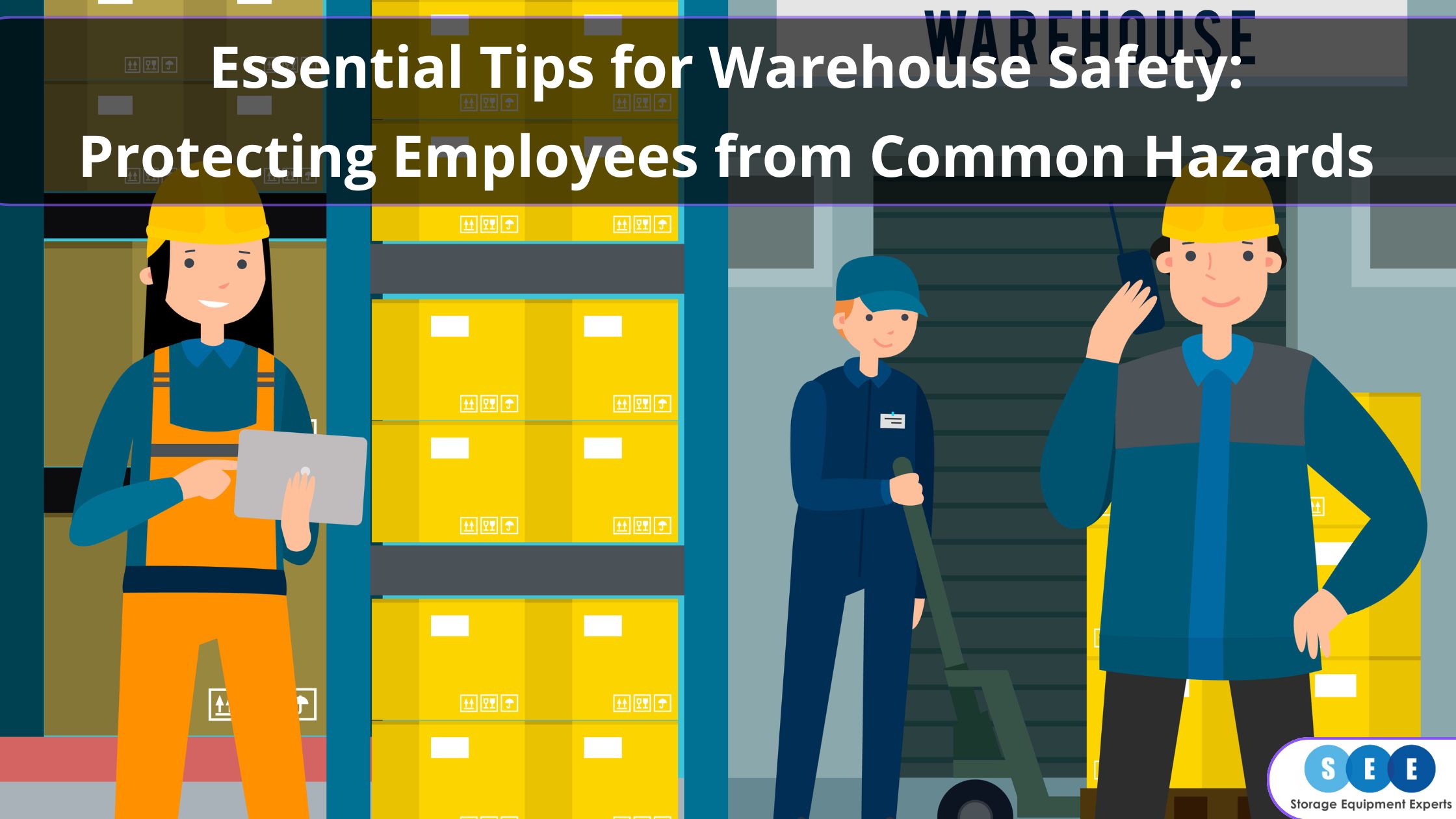Essential Tips for Warehouse Safety: Protecting Employees from Common Hazards
Warehouse safety is (or at least, should be) a top priority for any organization dealing with storage and distribution. Warehouses are, by their very nature, fast-paced and bustling environments, with forklifts zooming around, pallets stacked high, and workers constantly on the move – and with so much activity, the potential for accidents and injuries is high.
As a result, it’s important for warehouse managers, owners, operators, and other personnel to implement and adhere to robust safety measures. Sure – there is legal compliance at play, but more important than that is ensuring that employees have a safe environment to work in.
Let’s explore some essential tips to protect warehouse employees from common hazards.
Identifying Common Warehouse Hazards
The first step toward a safe warehouse is taking stock of the risks that could lead to accidents. Some of the most common hazards include forklift accidents, where a misjudgment can lead to collisions with racking or other workers. Slips, trips, and falls are the most common workplace accidents across all industries, and in the warehouse the risks are high as these accidents can be caused by cluttered aisles, spilled liquids, or uneven flooring. Falling objects from high shelves or racks pose a threat as well, especially if pallets are improperly stacked.
Other less obvious hazards will also contribute to the risk profile of a warehouse. Poor lighting can obscure dangers, leading to missteps or miscalculations and inadequate ventilation might not be an immediate threat, but it can lead to health issues over time.
Identifying these hazards will help you to reduce risks and protect your employees from harm.
Health and Safety Training for Employees
Safety training is essential in creating a safe warehouse environment. Employees need to know the correct procedures for operating machinery, handling goods, and safely getting around the warehouse. Effective training programs should cover a broad range of topics, from basic safety practices to emergency response procedures.
Proper training should include the safe use of all equipment, with an emphasis on forklifts and pallet jacks. This training should focus on how to operate these machines, safety checks, and emergency stop procedures. Employees also need to be aware of evacuation plans and fire safety protocols. Even hand held equipment like bladed instruments used for opening packaging should be covered in training – be sure to cover safe usage, storage and carrying.
Regular training refreshers ensure that safety knowledge stays current and front-of-mind. This ongoing education helps prevent complacency, which can lead to accidents. Safety training on an ongoing basis creates a culture of safety where employees feel confident and informed.
Safe Use of Equipment and Machinery
Equipment and machinery are at the heart of warehouse operations, but they can also be a source of danger if not used properly. While this is an area that may never be completely accident-free, you can work to reduce the risk. You can do this by ensuring that only trained and licensed personnel operate forklifts and other heavy machinery. Proper training teaches operators how to maneuver safely through aisles, avoid sudden movements, and maintain safe distances from other workers and racking systems.
Regular maintenance checks also essential – machinery that’s not in good working order can fail at critical moments, leading to accidents. Schedule periodic maintenance checks to ensure that all equipment is functioning correctly, and address any issues immediately. This proactive approach to equipment safety reduces the risk of unexpected breakdowns and accidents. You should also encourage personnel working with this equipment to perform pre-shift visual checks every time they start work, and decline the use of any machinery that they feel is not up to scratch.
Proper Warehouse Layout and Organization
We often talk about how a well-organized warehouse is more efficient, but it should be noted that it will also improve your overall safety. The layout should be designed with safety in mind, ensuring clear pathways and easy access to goods: cluttered aisles and misplaced pallets can lead to trips and falls, so it’s vital to keep the warehouse clean and orderly.
Proper labeling is another key aspect of a safe warehouse layout. Clear labels help employees find what they need without unnecessary detours, reducing risk of accidents caused by confusion or misdirection. Racking systems should be arrange to maximize space while providing safe access to all levels.
Consideration should also be given to the flow of traffic within the warehouse. Designate specific routes for forklifts and ensure that these paths are clear at all times. This separation between pedestrian and machine traffic greatly reduces the risk of collisions and other accidents.
Personal Protective Equipment (PPE)
Items like helmets, gloves, and safety shoes provide an additional layer of protection for employees working in potentially hazardous environments. Ensuring that PPE is in good condition and properly fitted is very important, as ill-fitting or damaged equipment can be ineffective or even dangerous.
PPE should be readily accessible to all employees. Make sure that there are ample supplies of essential safety gear and that employees are trained on when and how.
Building a Safety-Conscious Culture
A safety-conscious culture is one where every employee understands the importance of safety and takes responsibility for maintaining it. This culture is built through consistent communication, ongoing training, and a commitment to continuous improvement.
A workplace that prioritizes safety reduces accidents and also builds higher morale and job satisfaction. When employees feel safe and valued, they are more likely to take an active role in maintaining safety standards, creating a positive feedback loop that benefits everyone.
Conclusion
Warehouse safety is an ongoing challenge that requires a comprehensive approach. With regular inspections, proper training, and the use of personal protective equipment, warehouses can create a safer environment for employees. Implementing clear safety protocols and encouraging a safety-conscious/safety-first culture further reduces risks.
Find more guidance and advice, as well as book your racking inspection, right here on the SEE Racking Inspections site.

